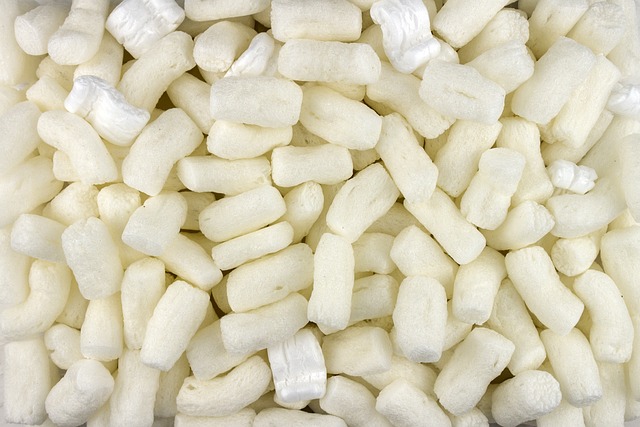Optimizing cushioning and void-fill for fragile products
Effective cushioning and void-fill strategies protect fragile items in transit while balancing weight, cost and environmental impact. Training in proper material selection, prototyping and testing helps teams reduce damage rates, minimize returns and improve logistics efficiency. Sustainable options and compliance with labeling and supply chain requirements are increasingly important for e-commerce and B2B shipping operations.

Start with the product profile: dimensions, fragility rating and distribution environment. Understanding where a fragile item will travel and how it will be handled informs choices about cushioning thickness, void-fill type and containment. Cushioning should control shock, vibration and compression without adding excessive bulk or weight that raises shipping costs. Integrating sustainability and recyclability goals at the design stage reduces iterations later, and aligning choices with warehouse automation constraints keeps handling efficient for fulfillment centers.
How do materials and recyclability affect cushioning?
Material selection determines protective performance, recyclability and waste. Common cushioning materials include bubble film and air cushions (plastic-based), molded pulp and corrugated inserts (fiber-based), and biodegradable foams or mycelium-based trays (emerging sustainable options). Fiber solutions often score well on recyclability and curbside acceptance but may require thicker profiles for the same impact protection as foams. When training teams, emphasize material data sheets, resin codes, and local recycling infrastructure so packaging choices match both protection needs and end-of-life expectations. Tracking material origins and certifications also supports vendor compliance and procurement decisions.
How to balance cushioning, void-fill and sustainability?
Balancing protection with environmental goals requires a layered approach. Start with right-sized primary packaging to reduce large voids, then add targeted cushioning at corners and high-stress points rather than filling entire cavities. Consider reusable or returnable systems where feasible for predictable B2B supply chains, and use recyclable void-fill like crumpled paper or molded pulp for single-use shipments. Evaluate trade-offs: some lightweight plastic air cushions can reduce damage rates and overall weight (lowering transport emissions) but may not be easily recyclable in all regions. Training should include lifecycle thinking and waste-reduction practices that suit your logistics footprint.
What role does prototyping and testing play?
Prototyping bridges design intent and real-world performance. Small-batch mock-ups allow teams to test different cushioning geometries, densities and placements without committing to large runs. Standardized drop, compression and vibration tests help quantify protection levels, and results should map back to damage rate targets and acceptable return rates. Training should cover how to interpret test results, set safety factors and simulate multi-leg shipments typical for ecommerce. Documented test protocols make it easier to scale solutions and communicate requirements to suppliers in the supplychain.
How to address compliance, labeling and logistics?
Compliance and labeling influence cushioning choices, especially for regulated or fragile goods like electronics and medical devices. Conditional packaging requirements — such as warnings, handling labels and documentation for hazardous components — must be integrated with protective inserts without obscuring required marks. Logistics constraints, including palletization, conveyor systems and automated sorting, can limit allowable package dimensions and cushioning thickness. Training should teach cross-functional coordination among packaging, compliance and operations teams to ensure labels remain visible and packages meet carrier dimension and weight constraints.
How to manage durability, returns and ecommerce shipping?
Durability isn’t only about surviving one leg of transit; it’s about repeated handling during returns, pick-and-pack, and storage. Cushioning that compresses permanently may protect on first shipment but fail in return paths. Workflows for returns should be considered in material choice and design: modular inserts that can be reseated for returns reduce waste and labor in processing. For ecommerce, where parcels face varied handling, standardized cushioning layers combined with tamper-evident labeling and clear handling instructions tend to reduce damage and customer disappointment. Training helps teams balance protective performance and operational ease to lower long-term costs and returns.
Cost insights and supplier comparison
Real-world pricing affects material and supplier decisions. Evaluate unit costs alongside labor for packing, the impact on volumetric weight in carrier pricing, and the cost of returns from inadequate protection. Automation-friendly solutions may have higher unit costs but reduce per-unit labor and error rates. The table below provides an illustrative comparison of established providers and typical service/product offerings; each cost estimate is a broad range based on typical industry benchmarks and purchase quantities.
| Product/Service | Provider | Cost Estimation |
|---|---|---|
| Bubble film (rolls) | Sealed Air | $20–$80 per roll (varies by size and quality) |
| Air cushions / inflatable void fill | Pregis | $0.03–$0.20 per cushion (dependent on cushion size and volume) |
| Protective foam and air pillows | Storopack | $0.05–$0.30 per protective unit (varies by system and volume) |
| Mycelium or molded sustainable trays | Ecovative | $1.00–$5.00 per custom tray (dependent on design and order size) |
Prices, rates, or cost estimates mentioned in this article are based on the latest available information but may change over time. Independent research is advised before making financial decisions.
Beyond unit pricing, factor in supplychain reliability, minimum order quantities, and compatibility with automated packing lines. Suppliers often offer design services and prototyping support that reduce development time; account for those value-adds when comparing total cost of ownership. Waste handling and recycling fees in certain regions may also shift the economic case toward recyclable or reusable solutions.
In summary, optimizing cushioning and void-fill for fragile products demands a systems approach: know the product, choose materials that meet protection and recyclability goals, validate with prototyping and testing, and align designs with compliance, labeling and logistics. Cost decisions should reflect both upfront material prices and downstream impacts on returns, waste and operational efficiency. Training that covers these interconnected topics equips teams to make defensible, measurable packaging decisions.






